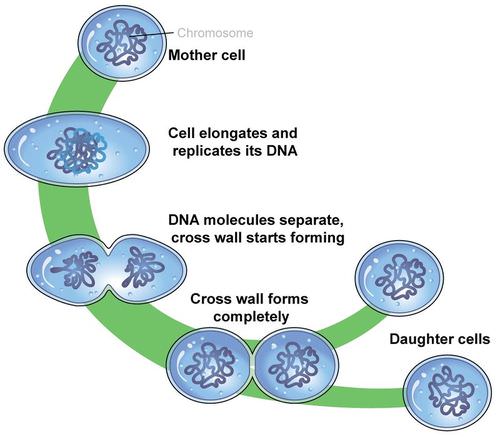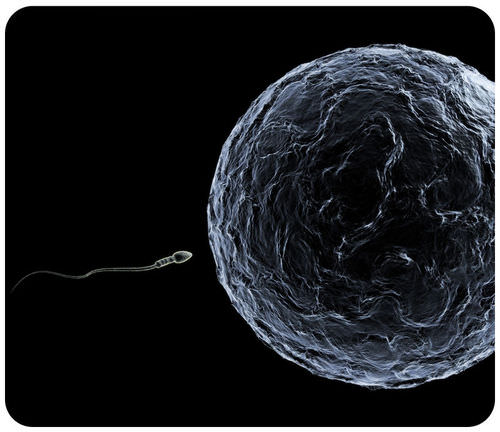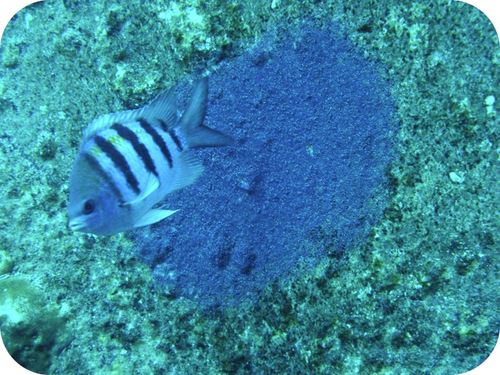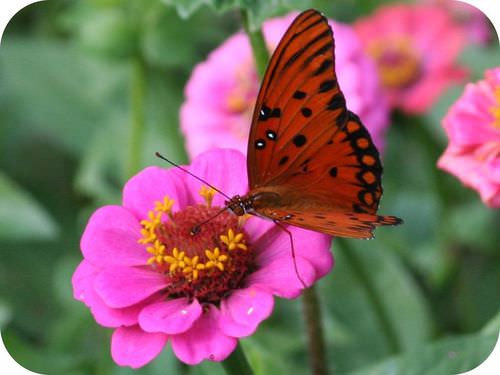2.14: Reproduction
- Page ID
- 13316

Do animals always have two parents?
No, not all animals have two parents. When necessary, some animals can be produced from just one parent. Some reptiles, such as this Komodo dragon, have only one parent. The process of creating offspring from just one individual is called asexual reproduction.
Reproduction
Animals and other organisms cannot live forever. They must reproduce if their species is to survive. But what does it mean to reproduce? Reproduction is the ability to make the next generation, and it is one of the basic characteristics of life. Two methods of reproduction are:
- Asexual reproduction, the process of forming a new individual from a single parent.
- Sexual reproduction, the process of forming a new individual from two parents.
There are advantages and disadvantages to each method, but the result is always the same: a new life begins.
Asexual Reproduction
When humans reproduce, there are two parents involved. DNA must be passed from both the mother and father to the child. Humans cannot reproduce with just one parent; humans can only reproduce sexually. But having just one parent is possible in other eukaryotic organisms, including some insects, fish, and reptiles. These organisms can reproduce asexually, meaning the offspring ("children") have a single parent and share the exact same genetic material as the parent. This is very different from reproduction in humans. Bacteria, being a prokaryotic, single-celled organism, must reproduce asexually.
The advantage of asexual reproduction is that it can be very quick and does not require the meeting of a male and female organism. The disadvantage of asexual reproduction is that organisms do not receive a mix of traits from both parents. An organism that is born through asexual reproduction only has the DNA from the one parent. In fact, the offspring is genetically an exact copy of the parent. This can cause problems for the individual. For example, if the parent has a gene that causes a particular disease, the offspring will also have the gene that causes that disease. Organisms produced sexually may or may not inherit the disease gene because they receive a mix of their parents' genes.
Types of organisms that reproduce asexually include:
- Prokaryotic organisms, like bacteria. Bacteria reproduce through binary fission, where they grow and divide in half (Figure below). First, their chromosome replicates and the cell enlarges. The cell then divides into two cells as new membranes form to separate the two cells. After cell division, the two new cells each have one identical chromosome. This simple process allows bacteria to reproduce very rapidly.
- Flatworms, an invertebrate animal species. Flatworms divide in two, then each half regenerates into a new flatworm identical to the original, a process called fragmentation.
- Different types of insects, fish, and lizards. These organisms can reproduce asexually through a process called parthenogenesis. Parthenogenesis happens when an unfertilized egg cell grows into a new organism. The resulting organism has half the amount of genetic material of the parent. Parthenogenesis is common in honeybees. In a hive, the sexually produced eggs become workers, while the asexually produced eggs become drones.

Sexual Reproduction
During sexual reproduction, two parents are involved. Most animals are dioecious, meaning there is a separate male and female sex, with the male producing sperm and the female producing eggs. When a sperm and egg meet during fertilization, a zygote, the first cell of a new organism, is formed (Figure below). This process combines the genetic material from both parents. The resulting organism will be genetically unique. The zygote will divide by mitosis and grow into the embryo.

Let's explore how animals, plants, and fungi reproduce sexually:
Animals often have gonads, organs that produce eggs or sperm. The male gonads are the testes, and the female gonads are the ovaries. Testes produce sperm; ovaries produce eggs. Sperm and egg, the two sex cells, are known as gametes, and can combine two different ways, both of which combine the genetic material from the two parents. Gametes have half the amount of the genetic material of a regular body cell; they are haploid cells. In humans, gametes have one set of 23 chromosomes. Gametes are produced through a special type of cell division known as meiosis. Normal human cells have 46 chromosomes. They are diploid cells, with two sets of 23 chromosomes (23 pairs).
Fish and other aquatic animals release their gametes in the water, which is called external fertilization (Figure below). These gametes will combine by chance. Animals that live on land (reptiles, birds, and mammals) reproduce by internal fertilization. Typically males have a penis that deposits sperm into the vagina of the female. Birds do not have penises, but they do have a chamber called the cloaca that they place close to another bird’s cloaca to deposit sperm. Amphibians must live close to water as they must lay their eggs in a moist or wet environment prior to external fertilization.

- Plants can also reproduce sexually, but their reproductive organs are different from animals’ gonads. Plants that have flowers have their reproductive parts in the flower. The sperm is contained in the pollen, while the egg is contained in the ovary, deep within the flower. The sperm can reach the egg two different ways:
- In self-pollination, the egg is fertilized by the pollen of the same flower.
- In cross-pollination, sperm from the pollen of one flower fertilizes the egg of another flower. Like other types of sexual reproduction, cross-pollination allows new combinations of traits. Cross-pollination occurs when pollen is carried by the wind to another flower. It can also occur when animal pollinators, like honeybees or butterflies (Figure below), carry the pollen from flower to flower.

- Fungi can also reproduce sexually, but instead of female and male sexes, they have (+) and (-) strains. When the filaments of a (+) and (-) fungi meet, the zygote is formed. Just like in plants and animals, each zygote receives DNA from two parent strains.
Summary
- Types of asexual reproduction, when a new individual is formed from a single parent, include binary fission in bacteria and parthenogenesis in some animals.
- During sexual reproduction in animals, fertilization can be internal or external.
- Cross-pollination allows sexual reproduction in plants.
Explore More
Use the resource below to answer the questions that follow.
- Plant reproduction: Asexual Reproduction at http://www.youtube.com/watch?v=drcnTg7ZCoc (2:57)
- How does the production of bulbs benefit plants?
- How can an organism benefit from asexual reproduction?
- What can be a negative effect of asexual reproduction? Is this more applicable to the individual or the population?
Review
- What is asexual reproduction?
- What is the advantage of sexual reproduction?
- Describe two types of asexual reproduction.
- What is a zygote?
- How many chromosomes are in a human zygote? How many chromosomes are in a human gamete?

